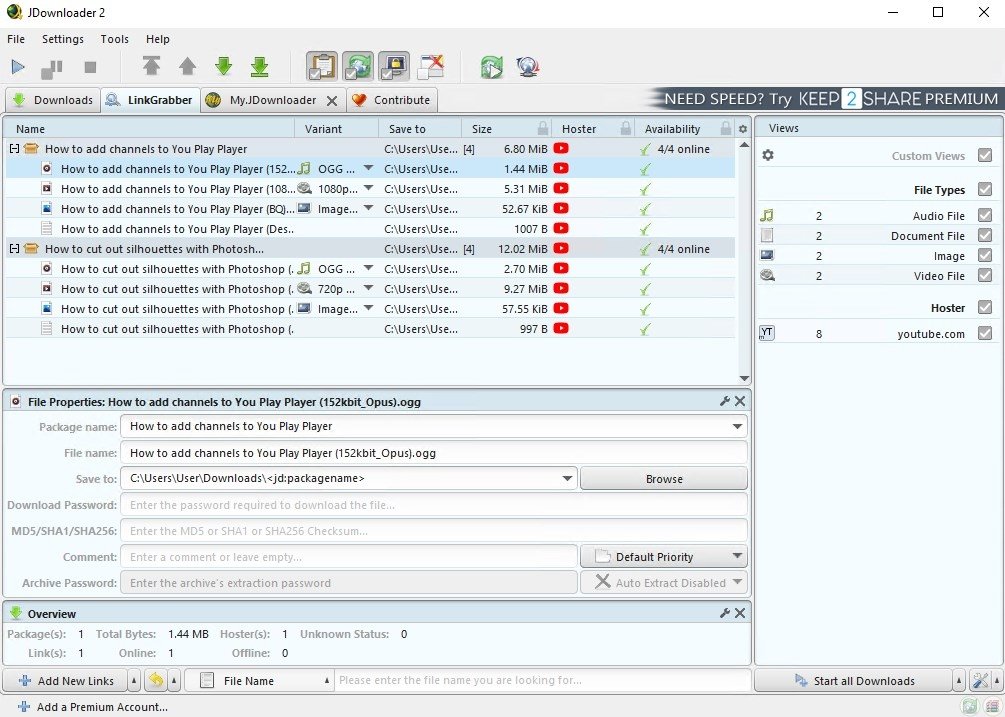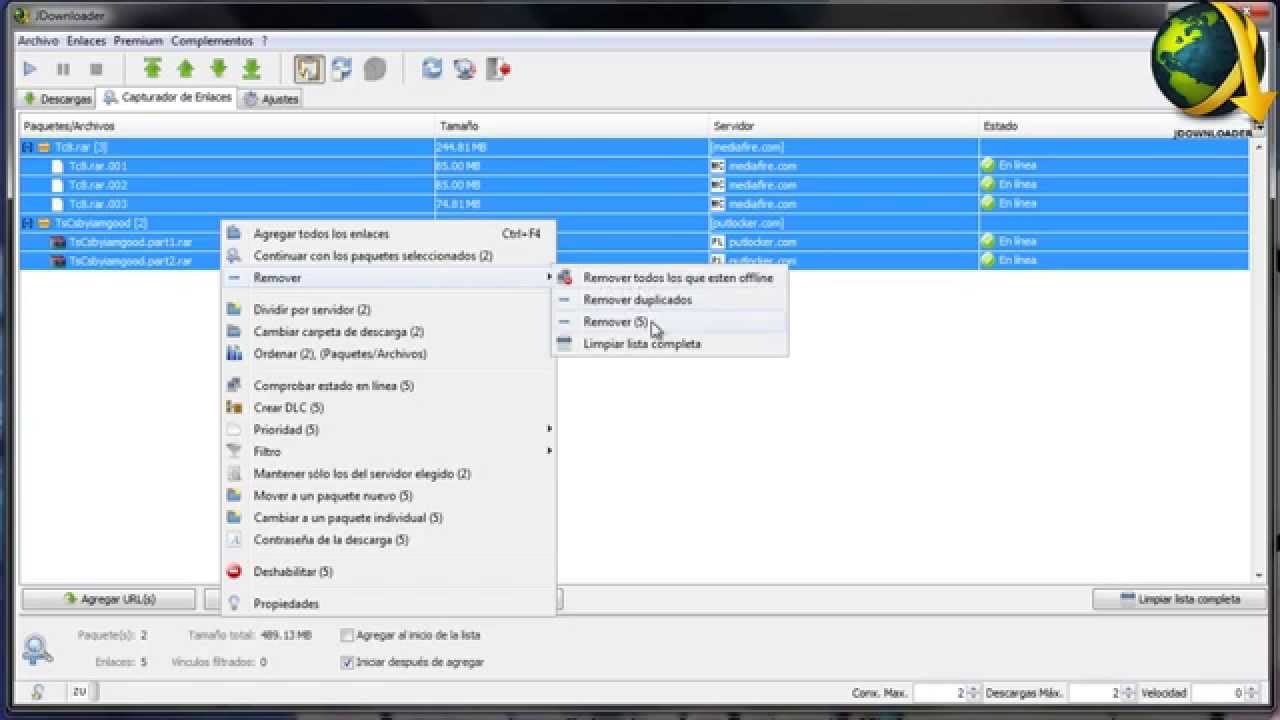

There is no "step-by-step" guide to this point as it varies from router to router. This, of course, is necessary so that Jdownloader can effectively disconnect / restart the router automatically.įinally, click on the Create reconnection script button.Ĥ.- The router's configuration page will open.Īll you have to do is reboot or reconnect it.
JDOWNLOADER 2 TUTORIAL PASSWORD
Go to Settings> Modules> Reconnection and Router.ģ.- Enter the IP of the router (in my case it was 10.0.0.2) and the username and password that your Internet provider assigned you.
JDOWNLOADER 2 TUTORIAL INSTALL
Steps to followĮn Ubuntu and derivatives: sudo add-apt-repository ppa: jd-team / jdownloader sudo apt-get update sudo apt-get install jdownloaderĮn Fedora and derivatives: your wget yum -y install Ģ.- Open Jdownloader.

JDOWNLOADER 2 TUTORIAL RAR
Optionally, the files in RAR format are automatically extracted after download. User specified download links are separated into packages to allow individual pause and continuation of downloads. You can check the service status using sudo service jdownloader statusĪnd that's it you have your JDownloader server in your Raspberry Pi and you can queue downloads using MyJDownloader from everywhere.The following tutorial should function practically for any router, regardless of the operating system you're running from jdownloader (in our case, Linux).Īs I suppose everyone knows by now, jDownloader is an open source download manager, written in Java, which allows automatic download of files from immediate hosting sites such as Mediafire, Rapidshare, among others. Start the service sudo systemctl start rviceĪnd at the end you need to enable the service sudo systemctl enable rvice PIDFile=/home/pi/bin/jdownloader/JDownloader.pidĪnd that's it you can finish the configuration reloading the SystemD Daemon sudo systemctl daemon-reload You should copy this configuration to the opened vim terminal, keep in mind that the ExecStart needs to point to the JDownloader executable ĮxecStart=java -jar /home/pi/jdownloader/JDownloader.jar -norestart Run in the terminal sudo touch /etc/systemd/system/rvice & sudo vim /etc/systemd/system/rvice In the next phase you can configure your JDownloader server such as SystemD service it is in order to have an unattended service and you can manage it using the services commands. Then you can check if your server is online in Īfter that you need to stop the JDownloader headless server pressing CTRL+C in the terminal You need to setup your email and password

You should wait if there is another update and then configure MyJDownloader with the credentials that you created in Wait if there are updates, after it finished you can stop it with CTRL+C command an you need to re run it again java -jar JDownloader.jar -norestart Then create a new folder and enter to the created folder mkdir jdownloader & cd jdownloaderĪfter that we finished the installation phase and we need to configure our JDownloader, we are start running the JDownloader executable java -jar JDownloader.jar -norestart Install java ffmpeg decoder, vim and unrar: sudo apt install -y default-jdk ffmpeg vim unrar-free This is a tutorial to install JDownloader such a systemd service in a Raspberry PI


 0 kommentar(er)
0 kommentar(er)
